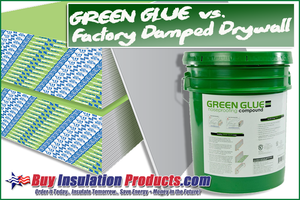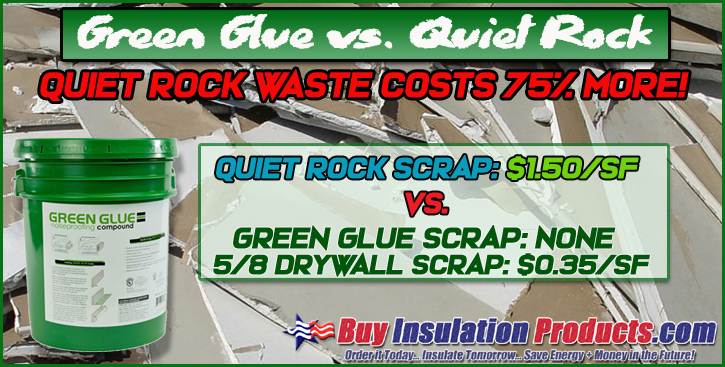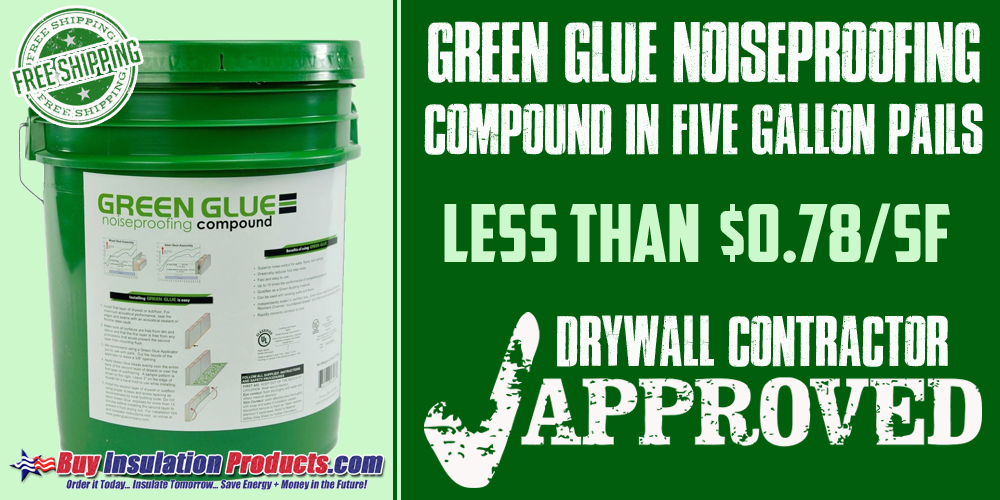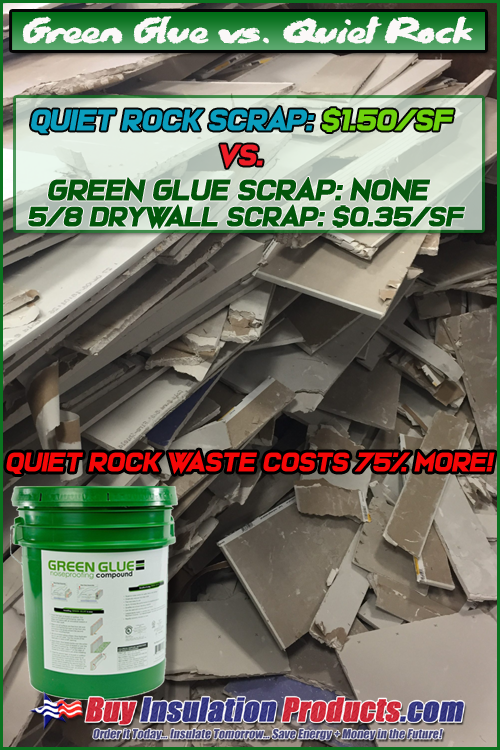Green Glue vs. Quiet Sheetrock
Posted by BIP on 9th Jun 2020
A very common question we get is about how Green Glue compares to just installing a Factory Damped Quiet Sheetrock instead. We had written a long article about all the pros and cons of Green Glue vs. Factory Damped Dyrwalls.
This blog post will be much shorter, but to the point. As a recent customer told one of our reps over the phone, he considers Green Glue to be "Quiet Rock on Steroids". His reasoning had to do with the fact that QuietRock drywall is basically a store bought thin version of Green Glue compound between two layers of drywall. The big difference is that factory damped drywall is usually a thin spread of damping compound sandwiched between two slivers of 1/4" drywall. Green Glue on the other hand is installed between two layers of 1/2" or Type X 5/8" drywall.
"Why does that matter?" you may be asking yourself. Well one major principle in soundproofing is MASS. The higher the mass of a wall, ceiling, or floor, the better it will be at blocking sound transmission. A thin 1/2" layer of factory damped dyrwall weighs 68 lbs per 4x8 compared to 144 lbs that Green Glue and 2 layers of Type X drywall weights per 4 x 8. That's more than double the weight of the factory damped drywall!
One of the biggest negatives of factory damped drywall is the cost of the drywall waste. If you have ever hung drywall, had a renovation done to your home, or just walked by a jobsite, you will know that a good portion of the drywall winds up in the dumpster. A delivery of 1 pallet of drywall can result in a very large pile of scrap on the jobsite! If you are installing a factory damped drywall which costs about 5 times the cost of standard Type X drywall you will be throwing away a lot of very expensive drywall scrap. On the other hand, if you are installing Green Glue between layers of drywall, you will throw away little to no actual Green Glue compound, and the drywall scrap will cost only around $0.35/sf compared to $1.50/sf for Quiet Rock factory damped drywall. This results in an approximate 75% more expensive scrap.




